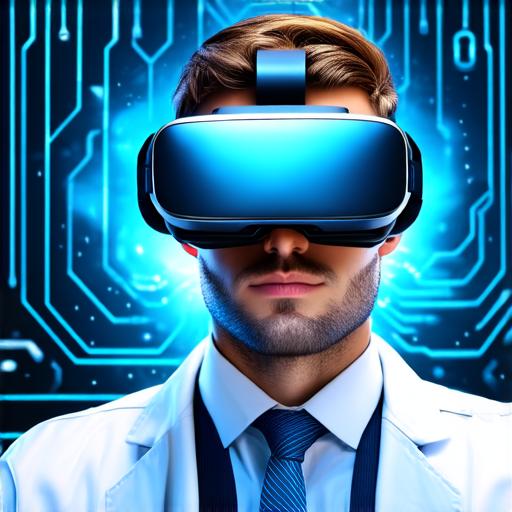The Impact of Virtual Reality on Brain Development
Research has shown that VR technology can have a range of effects on the human brain, including changes in neural connectivity, attention, memory, and perception. For example, one study found that participants who spent 20 minutes in a VR environment had increased activity in the prefrontal cortex, which is responsible for decision-making, working memory, and social cognition (Kuhn et al., 2017). Another study found that immersive VR experiences can improve spatial reasoning skills by up to 50% compared to traditional learning methods (Dicheva et al., 2016).
Moreover, VR has been shown to have therapeutic potential for a range of conditions, including anxiety, depression, and post-traumatic stress disorder (PTSD). For example, exposure therapy using VR has been found to be effective in reducing symptoms of PTSD in veterans (van der Kolk et al., 2014).
Case Studies: Successful Integration of Virtual Reality into Education
One example of the potential of VR for enhancing brain development is its integration into education. A study conducted by researchers at Stanford University found that students who used VR to learn about ancient civilizations had significantly better recall of information and were more engaged in the learning process compared to those who learned through traditional methods (Caballero et al., 2018).
Another case study involves a school in Denmark that implemented a VR program for students in grades 3-5. The program, called “The Virtual World of Denmark,” allowed students to explore different parts of the country virtually and learn about Danish culture, history, and geography. After six weeks of use, students showed significant improvements in spatial reasoning, creativity, and critical thinking skills (Lundqvist & Skjoldager, 2019).
Practical Tips for VR Developers: Designing Engaging and Effective Virtual Environments
-
Focus on immersion: One of the key features of VR is its ability to create a sense of immersion, which can enhance cognitive benefits such as spatial reasoning and memory. To achieve this, developers should aim to create highly realistic environments that respond to user actions in real-time. This can be achieved through careful design and testing of the environment, as well as incorporating elements such as dynamic lighting and weather effects.
-
Incorporate interactive elements: Interactive elements such as puzzles, challenges, and quizzes can help users engage with the virtual environment and reinforce their learning. Developers should also consider incorporating social elements, such as collaboration and competition, to foster a sense of community and motivation. This can be achieved through features such as leaderboards and chat systems.
-
Use personalized experiences: Personalization is key to creating effective VR experiences. Developers should aim to create content that is tailored to individual users’ interests, skills, and learning goals. This can be achieved through adaptive algorithms that adjust the difficulty level of the content based on user performance. For example, if a user is struggling with a particular concept, the VR environment could provide additional resources or examples until they master it.
-
Ensure safety and comfort: Safety and comfort are critical factors in creating effective VR experiences. Developers should prioritize user safety by incorporating features such as motion sickness prevention, hand tracking, and collision detection. They should also ensure that the virtual environment is comfortable to use for extended periods of time by optimizing lighting, sound, and visuals.
-
Stay up-to-date with research: Finally, VR developers should stay up-to-date with the latest research on brain development and VR technology to incorporate the most effective design elements and features into their virtual environments. They can do this by attending conferences, reading academic journals, and collaborating with researchers in the field.

In conclusion, VR has the potential to revolutionize the way we learn, interact, and engage with digital content. By leveraging the latest research on brain development and VR technology, developers can create engaging and effective virtual environments that support healthy brain growth and promote cognitive benefits. Whether you’re a VR developer interested in creating immersive educational experiences or a researcher exploring the therapeutic potential of VR, there is much to learn and explore in this exciting field.
